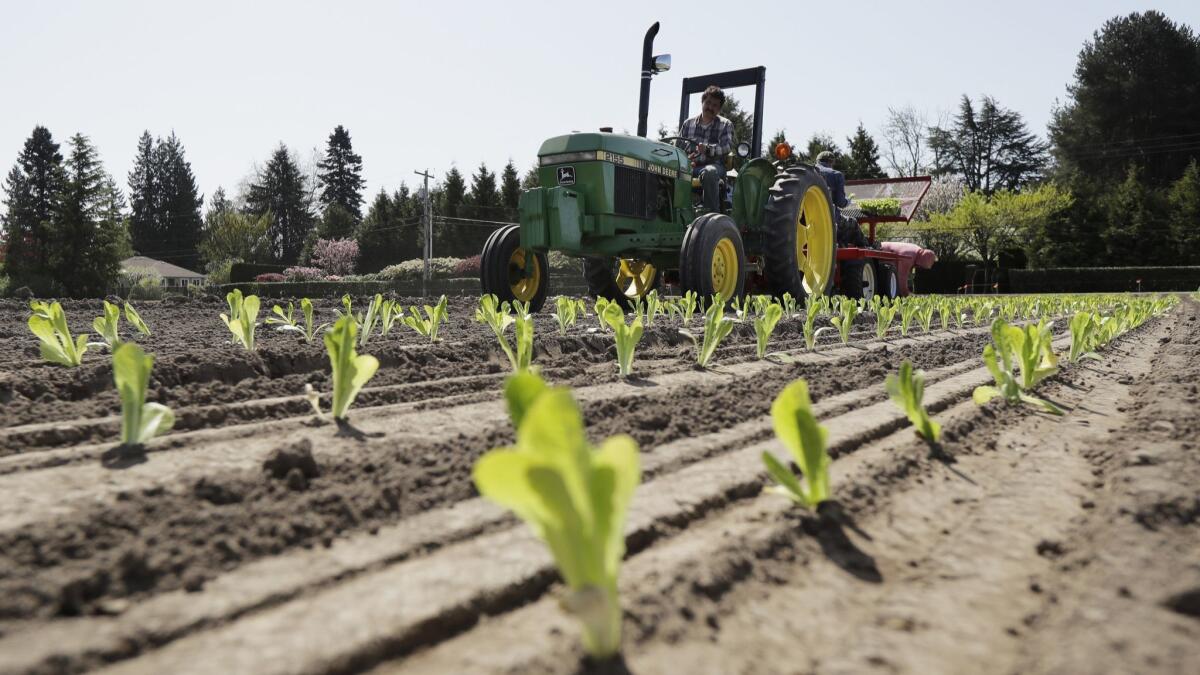First death from <i>E. coli</i>-contaminated romaine lettuce reported in California as outbreak spreads

The nationwide food poisoning outbreak from E. coli-contaminated romaine lettuce has claimed its first fatality, that of an unidentified person in California, and the contagion has sickened a total of 121 people in 25 states, the U.S. Centers for Disease Control and Prevention announced Wednesday.
That’s an increase of 23 people and three states -- Kentucky, Massachusetts and Utah -- since the most recent CDC update on Friday. With the numbers ratcheting up every week, this outbreak is approaching the scale of the 2006 baby spinach E. coli outbreak, in which 205 people became sick and five of them died.
This strain of E. coli produces a toxin that causes vomiting and diarrhea and potentially other severe symptoms, including in some cases kidney failure. Of the people sickened, 52 have been hospitalized, 14 of them with kidney failure.
The bacteria normally live in the intestines of animals, including cows and pigs, and in the 1990s, most E. coli cases were associated with contaminated hamburger. Reforms in the livestock industry have sharply reduced the number of outbreaks involving meat, but that has been offset by a surge in E. coli contamination of leafy greens.
Bill Marler, a Seattle-based food safety lawyer who has been involved in food-borne illness lawsuits for decades, said it’s striking that federal investigators still have not explained how, when and where the bacteria contaminated the romaine and spread to so many people and places. He said an outbreak of this size typically is easier to trace because there are more people providing clues to the origin of the pathogen.
“It’s 2018, and we’re basically a month into this outbreak, and they can’t link it to a farmer or a farm or a processor? I mean, candidly, that’s ridiculous,” Marler said. He said the leafy greens industry and government regulators made traceability a high priority after the 2006 baby spinach cases.
“They’re now 12 years post-spinach, and traceability was supposed to be one of the big things that came out of that disaster. And it just doesn’t seem to be getting there,” he said.
One farm in Yuma, Ariz., has been identified so far as supplying the whole-head lettuce linked to a cluster of E. coli cases among prisoners in Nome, Alaska. But investigators have not specified when and where that lettuce became contaminated with the dangerous bacteria, and the farm has not been linked to other cases. Many of the people sickened across the country consumed chopped lettuce that had been sold in bagged form to restaurants. The bacteria could have contaminated the lettuce somewhere in the production stream beyond the original farm.
The Yuma region -- which includes farms across the Colorado River into California’a Imperial County -- grows the overwhelming majority of the lettuce and other leafy greens consumed in the United States in the winter months, but the industry begins shifting to California’s Central and Salinas valleys in the second half of March and early April. Lettuce has a shelf life of only a couple of weeks at most, and any romaine lettuce on sale in stores today is likely not from Yuma and is not implicated in this outbreak.
But the CDC continues to emphasize that consumers should confirm that any lettuce they buy or eat did not originate in the Yuma region. This includes romaine in any form, including in a salad mix.
California now leads the nation with 24 cases, followed by Pennsylvania with 20 and Idaho with 11. The first two cases in this outbreak involved people who reported becoming sick on March 13, according to the CDC. The most recent case was April 21. There are delays in reporting and confirming cases linked to this specific strain of E. coli, and the CDC noted that cases involving people who became sick on or after April 11 may not be reported.
More to Read
Sign up for Essential California
The most important California stories and recommendations in your inbox every morning.
You may occasionally receive promotional content from the Los Angeles Times.










